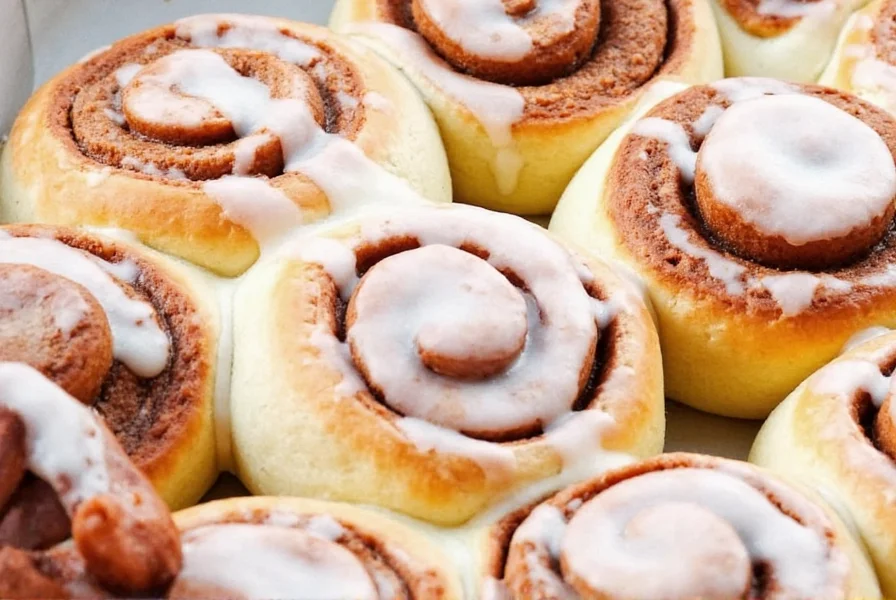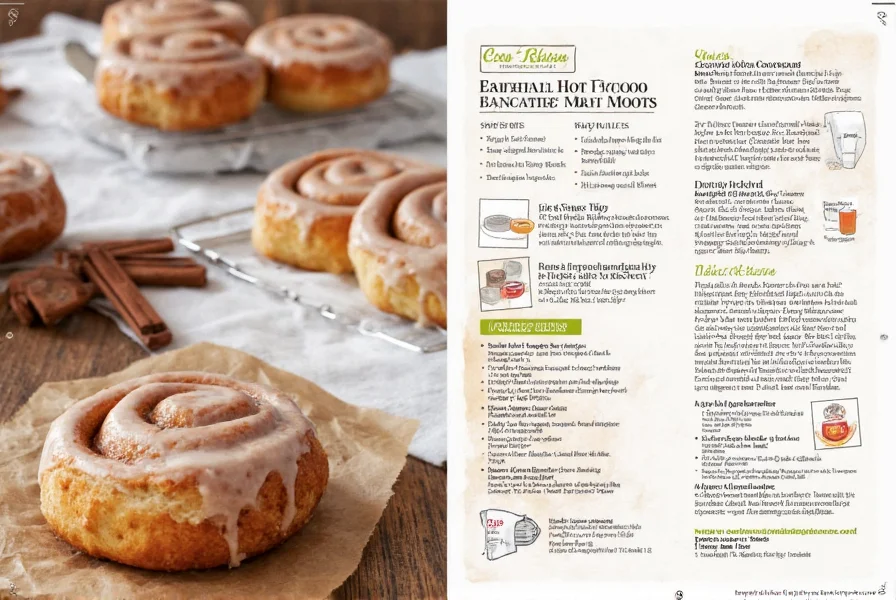Hot cocoa cinnamon rolls represent a delicious fusion of two beloved comfort foods: the rich, chocolatey warmth of hot cocoa and the sweet, spiced perfection of cinnamon rolls. This creative pastry variation has gained popularity among home bakers seeking to elevate the classic breakfast treat with chocolate undertones that complement rather than overpower the traditional cinnamon flavor profile.
What sets authentic hot cocoa cinnamon rolls apart is the thoughtful integration of cocoa elements at multiple stages—not just as a topping but woven into the dough, filling, and icing. Unlike simple chocolate swirl pastries, true hot cocoa cinnamon rolls capture the essence of a steaming mug of cocoa through carefully balanced ingredients and preparation techniques.
The Essential Components of Perfect Hot Cocoa Cinnamon Rolls
Creating exceptional hot cocoa cinnamon rolls requires attention to three critical elements that work in harmony. Each component contributes to the distinctive hot cocoa experience while maintaining the structural integrity expected from quality cinnamon rolls.
| Component | Key Ingredients | Hot Cocoa Integration Method |
|---|---|---|
| Dough | All-purpose flour, yeast, milk, butter, sugar, egg | Unsweetened cocoa powder blended into dry ingredients |
| Filling | Brown sugar, cinnamon, butter | Additional cocoa powder mixed with cinnamon and sugar |
| Icing | Cream cheese or powdered sugar base | Melted chocolate or cocoa powder infusion |
Why Traditional Cinnamon Roll Recipes Need Modification for Hot Cocoa Version
Simply adding cocoa to a standard cinnamon roll recipe often yields disappointing results—either a muddy texture or an unbalanced flavor profile. The secret to successful hot cocoa cinnamon rolls lies in strategic modifications that maintain the delicate chemistry of yeast dough while introducing chocolate elements.
Professional bakers recommend reducing liquid content slightly when incorporating cocoa powder, as the powder absorbs more moisture than flour. Additionally, using Dutch-processed cocoa rather than natural cocoa creates a smoother flavor integration with less acidity that could interfere with yeast activity. The ratio of cocoa to cinnamon is also critical—typically a 3:1 cinnamon to cocoa ratio preserves the familiar cinnamon roll essence while adding chocolate depth.
Step-by-Step Preparation Guide
Creating hot cocoa cinnamon rolls requires careful attention to temperature and timing. The dough preparation follows standard enriched yeast dough protocols with specific cocoa-related adjustments.
Dough Preparation
Begin by warming milk to 110°F (43°C)—critical for optimal yeast activation without killing the microorganisms. In a separate bowl, whisk together 3¼ cups all-purpose flour, ⅓ cup unsweetened Dutch-processed cocoa powder, 2¼ teaspoons active dry yeast, and ¼ cup granulated sugar. The cocoa powder must be sifted thoroughly to prevent clumping in the dough.
Mix the dry ingredients with the warm milk, one large egg, and ⅓ cup melted butter. Knead for 5-7 minutes until the dough becomes smooth and elastic. The cocoa will give the dough a rich brown color rather than the typical pale yellow of plain cinnamon roll dough.
Filling and Assembly
For the signature hot cocoa filling, combine 1 cup packed brown sugar, 2 tablespoons cinnamon, and 3 tablespoons additional cocoa powder. Roll the risen dough into a 16x12 inch rectangle, brush with melted butter, then evenly sprinkle the cocoa-cinnamon mixture. Roll tightly from the long side, pinch the seam closed, and cut into 1½ inch slices using dental floss for clean cuts without squishing the rolls.
Baking and Finishing
Place rolls in a buttered baking dish with space between them for expansion. Allow second rise until nearly doubled (about 45 minutes). Bake at 350°F (175°C) for 22-25 minutes until golden brown. While cooling, prepare the hot cocoa icing by whisking together powdered sugar, melted chocolate, a touch of cocoa powder, and enough milk to reach desired consistency.
Common Mistakes to Avoid
Many home bakers encounter issues with hot cocoa cinnamon rolls due to improper cocoa integration. Adding cocoa powder directly to wet ingredients creates clumps that don't incorporate properly. Using natural cocoa instead of Dutch-processed can create an unpleasantly acidic flavor that competes with the cinnamon.
Overfilling with cocoa is another frequent error—more than ⅓ cup cocoa in the dough can inhibit gluten development, resulting in dense, heavy rolls rather than the desired light, airy texture. Similarly, excessive cocoa in the filling can create a dry, chalky texture rather than the moist, gooey center expected in quality cinnamon rolls.
Variations and Customization Ideas
Once you've mastered the basic hot cocoa cinnamon roll recipe, numerous creative variations can personalize this treat. For a mocha-inspired version, add 1-2 teaspoons instant espresso powder to the dough. White chocolate lovers can substitute white chocolate cocoa powder in the icing for a different flavor profile.
For holiday occasions, incorporate crushed candy canes into the icing for a peppermint hot cocoa variation. Health-conscious bakers might experiment with black cocoa powder for an even richer chocolate flavor that mimics commercial hot cocoa mixes, though this requires careful balancing to avoid overwhelming the cinnamon notes.
Serving and Storage Recommendations
Hot cocoa cinnamon rolls taste best when served slightly warm, allowing the icing to melt perfectly into the crevices. For optimal freshness, store leftovers in an airtight container at room temperature for up to 2 days. To refresh, microwave individual rolls for 10-15 seconds or warm in a 300°F oven for 5 minutes.
Freezing unbaked rolls is an excellent make-ahead option—place assembled rolls on a parchment-lined baking sheet, freeze until solid, then transfer to freezer bags. When ready to bake, place frozen rolls in a greased pan, cover, and allow 4-5 hours for thawing and rising before baking as directed.

Conclusion
Hot cocoa cinnamon rolls represent a sophisticated evolution of the classic pastry, offering chocolate lovers a familiar yet exciting variation. By understanding the proper integration of cocoa at each stage—from dough to filling to icing—bakers can create a truly exceptional treat that captures the essence of hot cocoa in handheld form. The key lies in balanced proportions that enhance rather than dominate the traditional cinnamon roll experience, resulting in a pastry that satisfies both chocolate and cinnamon cravings simultaneously.
Frequently Asked Questions
Can I use chocolate chips instead of cocoa powder in hot cocoa cinnamon rolls?
While chocolate chips can be incorporated into the filling, they shouldn't replace cocoa powder in the dough. Cocoa powder integrates smoothly into the dough structure, while chocolate chips would melt during baking and create uneven texture. For best results, use cocoa powder in the dough and consider adding chocolate chips to the filling for extra chocolate pockets.
How do I prevent my hot cocoa cinnamon rolls from becoming too dry?
To maintain moisture in hot cocoa cinnamon rolls, don't exceed ⅓ cup cocoa powder in the dough, as cocoa absorbs more liquid than flour. Ensure proper yeast activity by using milk warmed to exactly 110°F, and don't overbake—remove rolls when they're golden but still soft to the touch. Adding an extra tablespoon of melted butter to the dough can also help counteract cocoa's drying effect.
What's the difference between using natural and Dutch-processed cocoa in cinnamon rolls?
Dutch-processed cocoa has been treated with alkali, resulting in a milder, smoother flavor and darker color that integrates better with cinnamon flavors. Natural cocoa is more acidic, which can interfere with yeast activity and create an unbalanced flavor profile. For hot cocoa cinnamon rolls, Dutch-processed is generally preferred for its richer chocolate notes without the acidity that might compete with cinnamon.
Can I make hot cocoa cinnamon rolls ahead of time?
Yes, you can prepare hot cocoa cinnamon rolls in advance. Assemble the rolls, place them in the baking dish, cover tightly, and refrigerate overnight. The next morning, remove from refrigerator 1-2 hours before baking to allow proper rising. Alternatively, freeze unbaked rolls on a baking sheet, then transfer to freezer bags. When ready to bake, thaw and rise for 4-5 hours before baking as directed.











 浙公网安备
33010002000092号
浙公网安备
33010002000092号 浙B2-20120091-4
浙B2-20120091-4